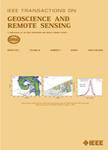版权所有:内蒙古大学图书馆 技术提供:维普资讯• 智图
内蒙古自治区呼和浩特市赛罕区大学西街235号 邮编: 010021

作者机构:China Univ Min & Technol Beijing State Key Lab Fine Explorat & Intelligent Dev Coal Beijing 100083 Peoples R China Khalifa Univ Dept Earth Sci Abu Dhabi U Arab Emirates
出 版 物:《IEEE TRANSACTIONS ON GEOSCIENCE AND REMOTE SENSING》 (IEEE Trans Geosci Remote Sens)
年 卷 期:2025年第63卷
核心收录:
学科分类:0808[工学-电气工程] 1002[医学-临床医学] 08[工学] 0708[理学-地球物理学] 0816[工学-测绘科学与技术]
基 金:National Natural Science Foundation of China [52394192, 42104139] National Natural Science Foundation of Innovative Research Groups Project Fundamental Research Funds for Central Universities [2021YQDC10] The 111 Project [B18052]
主 题:Optimization Mathematical models Accuracy Particle swarm optimization Linear programming Bayes methods Reflection coefficient Stability criteria Newton method Data mining Accurate Hessian matrix gradient-based global optimizer (GBO) prestack inversion three-variable Cauchy distribution
摘 要:Prestack inversion is typically based on the Zoeppritz equation combined with gradient-based optimization of objective functions. To address the limitations of traditional gradient-based algorithms that heavily rely on initial models, researchers have introduced intelligent optimization algorithms, such as particle swarm optimization (PSO), into prestack inversion to improve inversion accuracy. However, these global optimization algorithms often exhibit low computational efficiency due to insufficient consideration of gradients and the Hessian matrix. In this study, we introduce the exact Zoeppritz gradient-based global optimization (EZGBO) method, which integrates an accurate gradient and the Hessian matrix under a Bayesian framework with a three-variable Cauchy prior into the gradient-based global optimizer (GBO) to enhance inversion accuracy and efficiency. The proposed method combines the advantages of traditional Newton-like algorithms and global intelligent optimization algorithms by incorporating the accurate gradient and the Hessian matrix of the objective function into the global optimization process. This approach achieves better inversion results with fewer particles and iterations, thus enhancing computational efficiency. To ensure the stability of the stochastic global inversion, we employ adaptive edge-preserving smoothing (Ad-EPS) to facilitate optimal positioning of the population particles. Finally, we validate the proposed method using both synthetic and field data. Specifically, we compared the proposed method with quantum PSO (Q) and traditional approaches. The results show that our method excels in accuracy, stability, efficiency, and resolution, offering a novel solution to global optimization in prestack inversion.